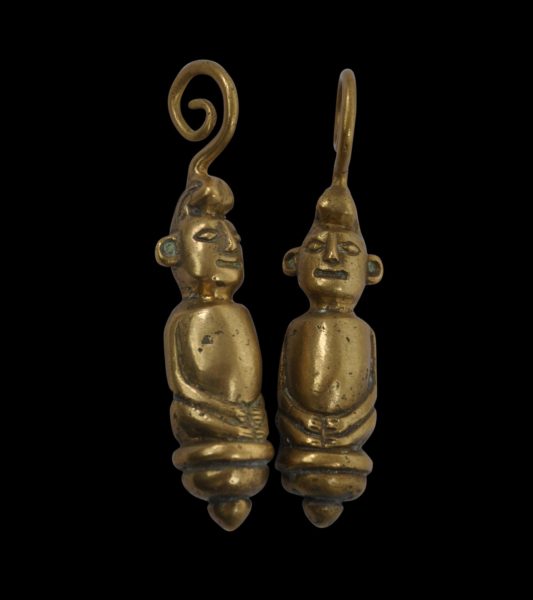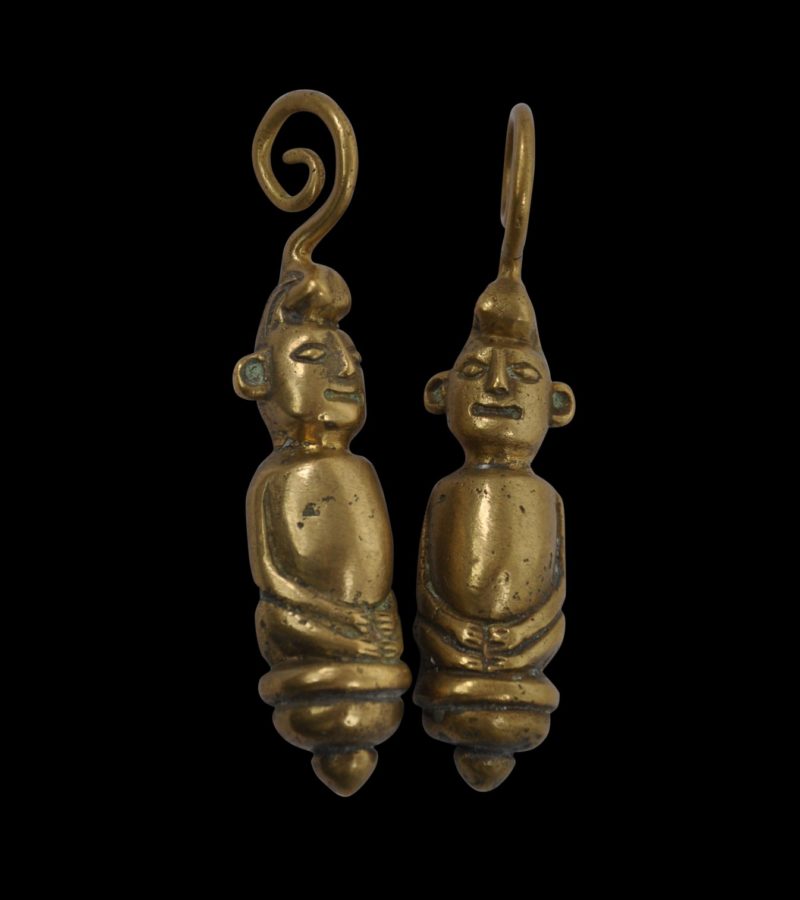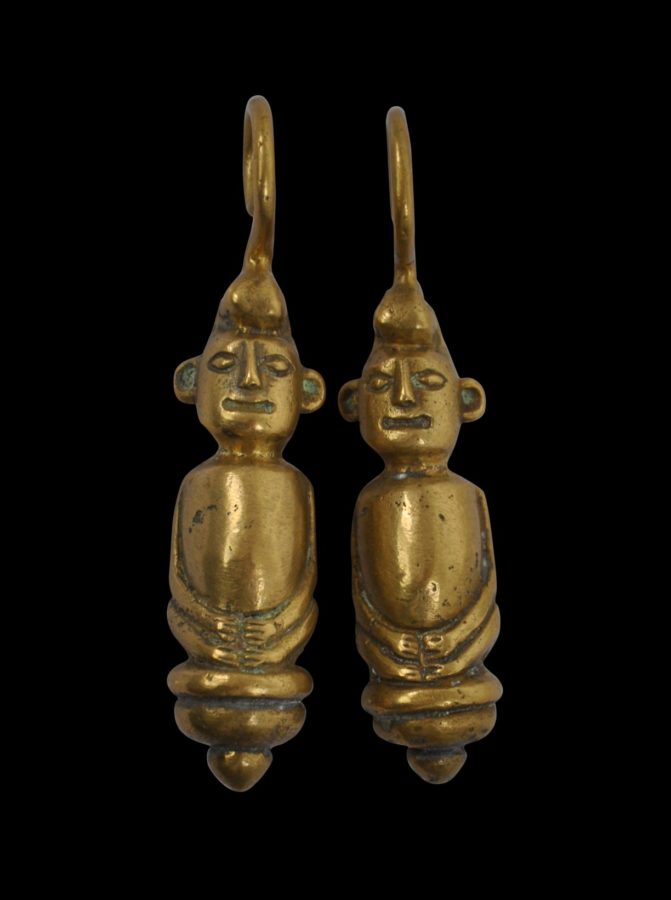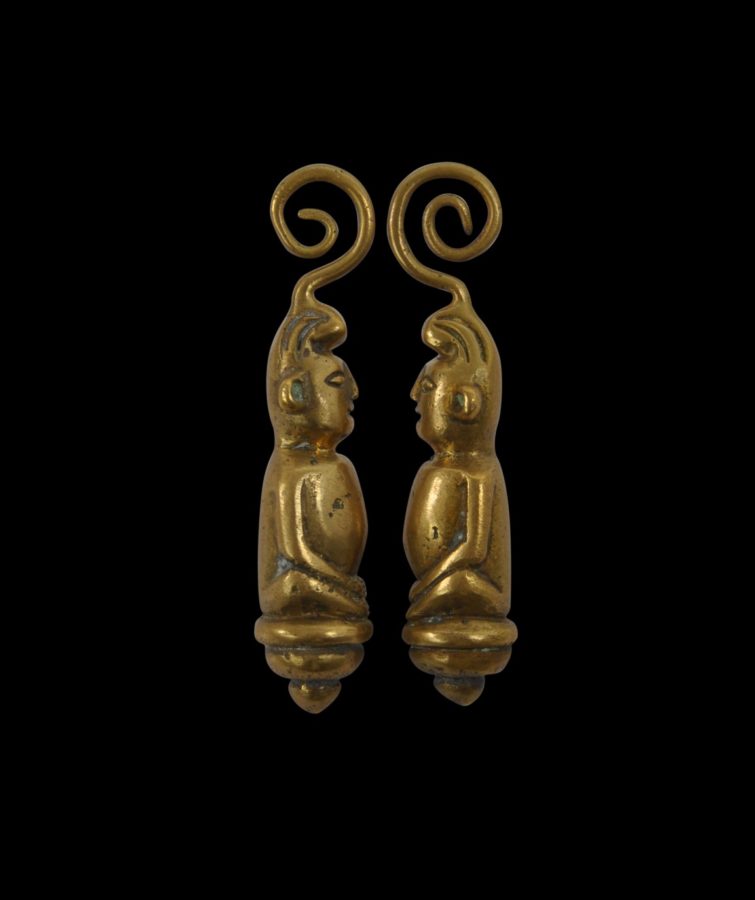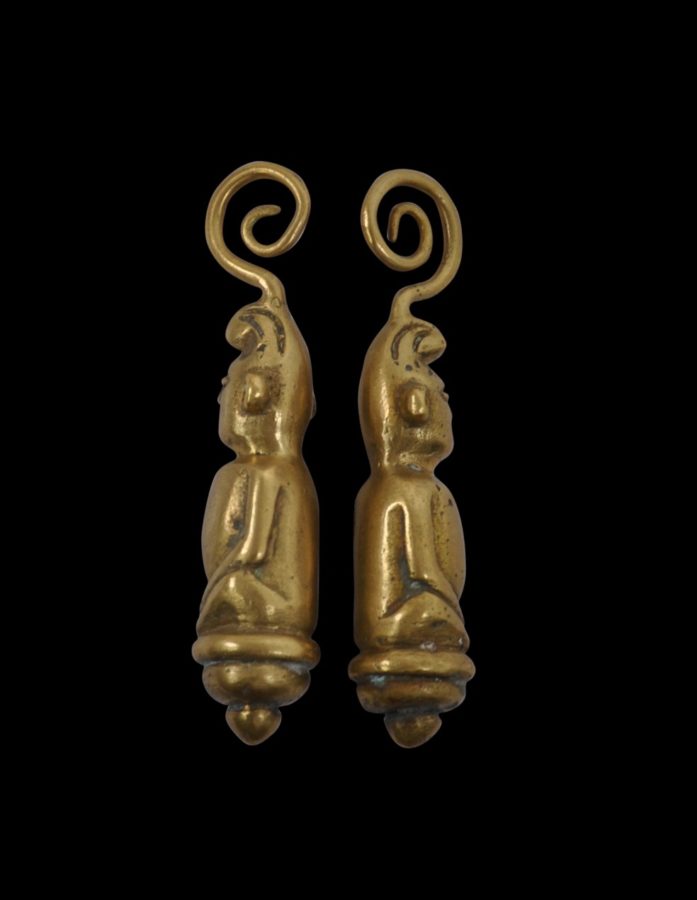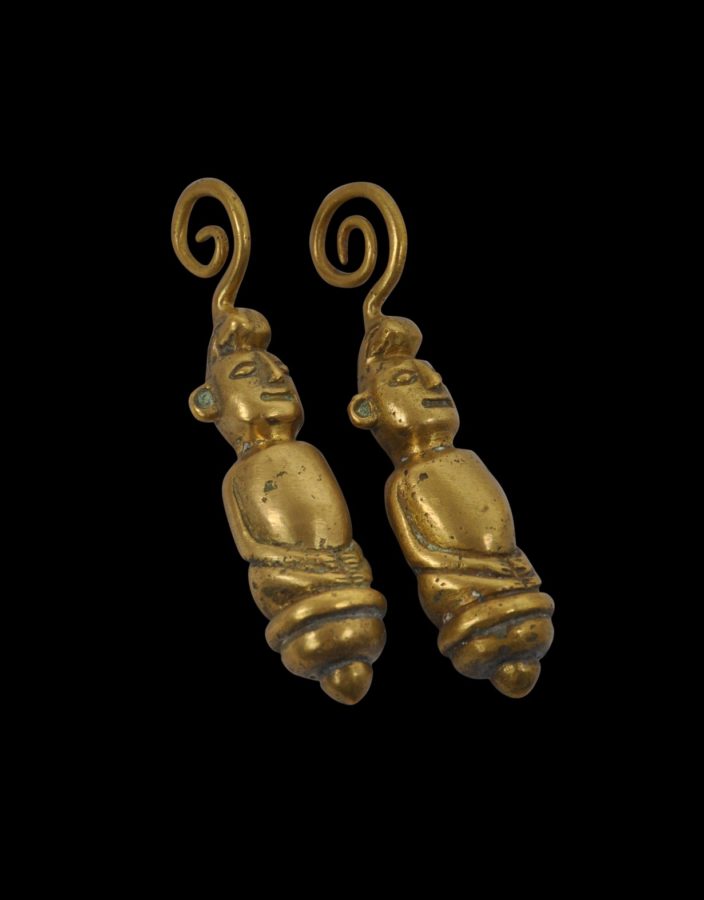Old Dayak earrings cast with a human form are unusual. A very similar pair in the Barbier-Mueller Museum in Geneva is illustrated in Rodgers (1995, p. 280).
Each has been cast from solid brass in the form of a humanoid figure with legs crossed and the hands together resting on the feet. Each figure has ears that jut out and a curl to the top of the head from which the brass wire spiral loop emerges which is threaded onto the elongated earlobe for suspension.
Anthromorphic figures typically representing ancestral spirits often appear in Dayak sculptural and textile art. They were seen as potentially malevolent beings but if appropriately placated could serve protective and talismanic functions.
Ear pendants of this weight allowed male and female Dayak tribes-people to stretch their earlobes to beyond their shoulders. This pair came from Sarawak, on the Malaysian side of the island of Borneo, but Dayak groups in Kalimantan on the Indonesian side also used such ear pendants.
Ear ornaments of brass were signs of prestige and power.
Modern reproductions of this style of ear pendant abound but this pair has the appropriate patina and provenance.
Earrings of this size and weight would have been reserved for a person of great prestige. They would have been used to stretch the ear lobes to a remarkable length. Thereafter, great care was needed to prevent the ear lobe from breaking. Women tended to stretch their ear lobes much more than men: it was considered effeminate for a Dayak man to have lobes stretched beyond the shoulders. Today, the practice of elongating the earlobes largely has died out among the Dayaks.
The examples here are in excellent condition and have a good ‘feel’ in the hand. They were acquired in the UK and most probably came to the UK during colonial times.
References
Hoek, C., et al, Ethnic Jewellery: From Africa, Asia and Pacific Islands, Pepin Press, 2004.
Richter, A., The Jewelry of Southeast Asia, Thames & Hudson, 2000.
Rodgers, S., Power and Gold: Jewelry from Indonesia, Malaysia and the Philippines, The Barbier-Mueller Museum, Geneva, 3rd ed. 1995.


